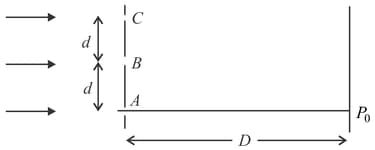A narrow slit transmitting light of wavelength is placed at a distance above a large plane mirror as shown. The light coming directly from the slit
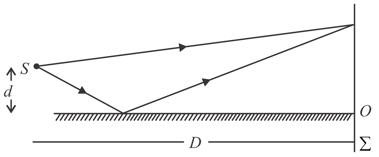
and that coming after the reflection interfere at a screen placed at a distance from the slit.
(a) What will be the intensity at a point just above the mirror, i.e., just above ?
(b) At what distance from does the first maximum occur?

(a) What will be the intensity at a point just above the mirror, i.e., just above ?
(b) At what distance from does the first maximum occur?

Important Questions on Light Waves
A double slit is illuminated by a coherent light of wavelength The slits are separated by a distance A plane mirror is placed in front of the double slit at a distance from it and a screen is placed behind the double slit at a distance from it. The screen receives only the light reflected by the mirror. The fringe-width of the interference pattern on the screen is . Find .
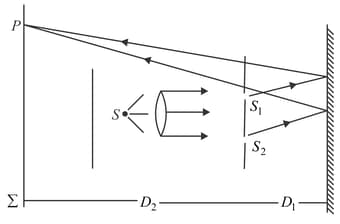
White coherent light is sent through the slits of a Young's double-slit experiment. The separation between the slits is and the screen is away from the slits. There is a hole in the screen at a point away (along the width of the fringes) from the central line.
(a) Which wavelength(s) will be absent in the light coming from the hole?
(b) Which wavelength(s) will have a strong intensity?
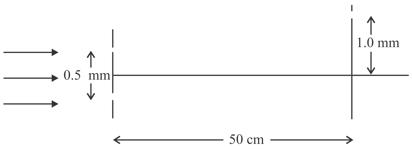
Consider the arrangement shown. The distance is large compared to the separation between the slits.
(a) The minimum value of so that there is a dark fringe at is given as
(b) Suppose has this value then the distance at which the next bright fringe is formed is given as
(c) The fringe-width is given as .
Find the value of

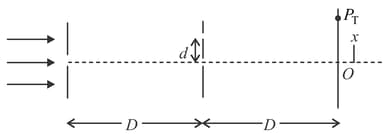
The figure shows three equidistant slits being illuminated by a monochromatic parallel beam of light. Let and
(a) Show that in this case
(b) Show that the intensity at is three times the intensity due to any of the three slits individually.
